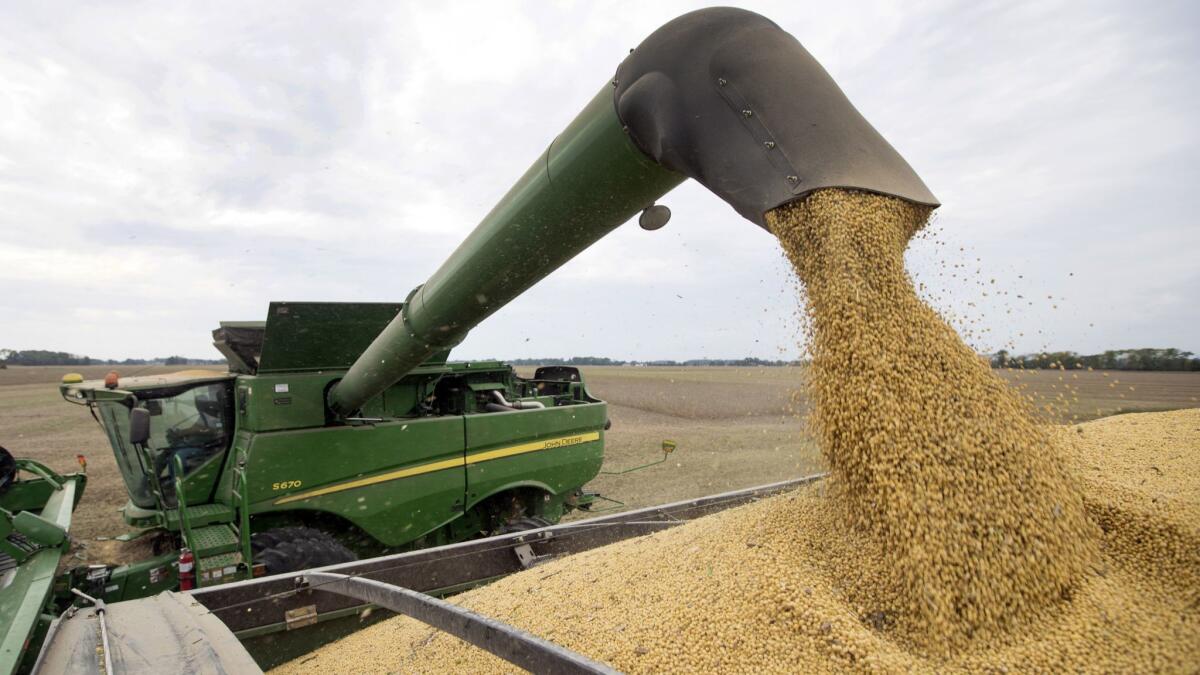U.S. soy exports won’t return to pre-trade war levels for years, USDA says

- Share via
U.S. soybean exports won’t return to their pre-trade war levels until the 2026-27 season as competitors in South America gain global market share.
That’s according to long-term projections released Thursday by the U.S. Department of Agriculture on its website. Demand for American soy has taken a hit after China slapped tariffs on a host of U.S. farm goods as part of the nations’ trade war.
While China has recently resumed buying U.S. soybeans, that hasn’t moved prices much. Purchases have been too small to make up for the lost sales. Meanwhile, bumper crops mean silos and grain bins across the Midwest are full of inventory. Soybean futures traded in Chicago are down about 12% in the last year.
America’s farmers — part of the base that helped drive Donald Trump’s election victory — have been collateral victims of many of the administration’s policies. After the trade war sparked declines in crop prices, the president rolled out aid payments to help soften that blow.
“The bailouts did help out some,” Lynn Rohrscheib, chairwoman of the Illinois Soybean Assn., said in an interview with Bloomberg Television this week. “But most farmers, they just didn’t want that. We want to be able to grow our crop and receive a fair price.”
Rohrscheib said that she knows of some producers who aren’t farming this year because of the tariffs, and that her family “took a $600,000 hit to our annual income” as a result of the trade war.
Meanwhile, a labor shortage — which some in the industry say is at least partly a result of Trump’s tough stand on immigration — has meant that agricultural employers are having to pay higher wages at a time when they’re contending with sluggish markets. On Thursday, U.S. poultry producer Pilgrim’s Pride Corp. said it was increasing wages $50 million, year-over-year, to attract employees.
More to Read
Inside the business of entertainment
The Wide Shot brings you news, analysis and insights on everything from streaming wars to production — and what it all means for the future.
You may occasionally receive promotional content from the Los Angeles Times.










